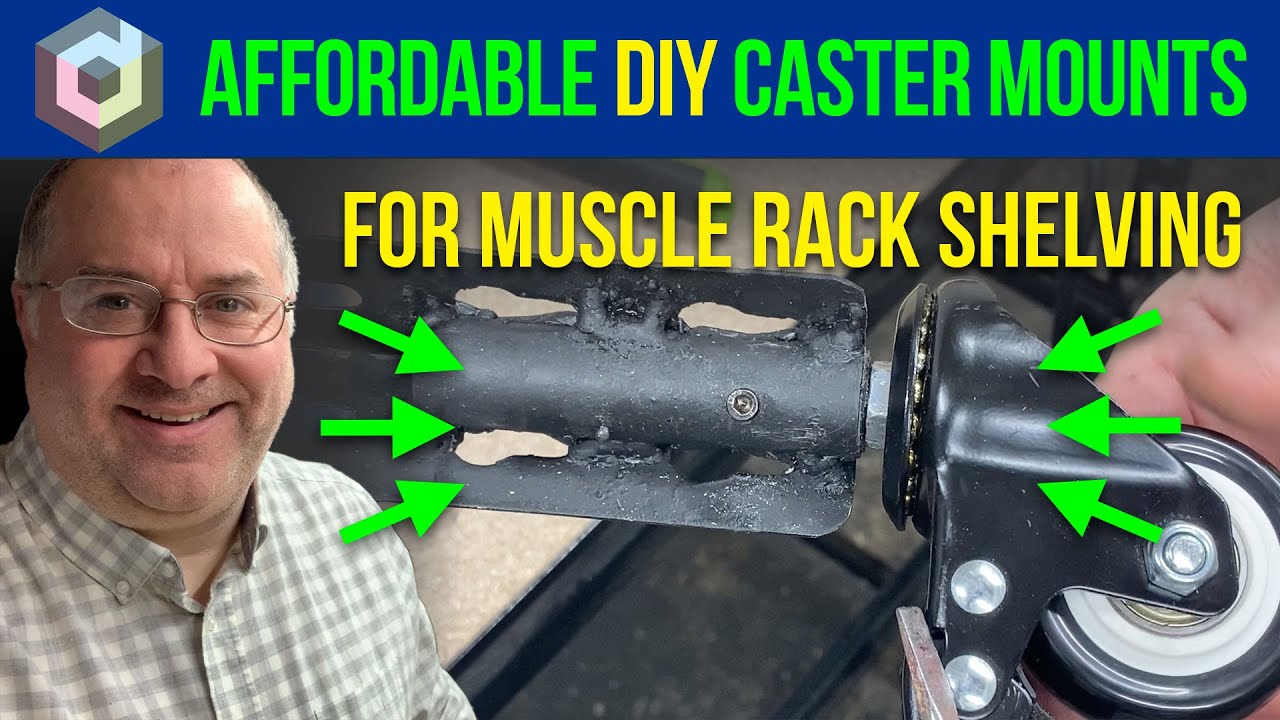WARNING: EMT conduit is usually galvanized, and welding galvanized metal releases toxic fumes related to zinc. It should not be undertaken lightly, and requires adequate ventilation. Except for the first few seconds, I wore a mask designed to protect against such fumes, and I used a fan to help with ventilation.
Print Settings:
- No supports needed.
- Print as oriented.
- Increase number of perimeter walls to a high number so the result will be solid plastic without any infill needed.
*Purchase links (used this video):
- YESWELDER 135Amp MIG Welder, 110V Flux Core Welder Flux MIG/Lift TIG/Stick 3-in-1 IGBT Inverter Welder - Amazon.com
- BIQU B1 3D printer - Amazon.com
- WEN 94475 7.5-Amp 4-1/2-Inch Angle Grinder with Reversible Handle - https://amzn.to/45CiqMK
- SEEKONE Heat Gun 1800W, Fast Heating, Heavy Duty - https://amzn.to/3PpJhpJ
- Muscle Rack Storage - 48 in. W x 24 in. D x 72 in. H - 5-Shelf Steel Shelving Unit, Black - https://amzn.to/3R3tIW9
- Stem Casters - Heavy Duty 2" - set of 4 rated for 600 lbs (each caster rated for 150 lbs) - https://amzn.to/3Rb3xg7
- 1/2-in x 10-ft Metallic EMT Conduit - https://www.lowes.com/pd/Common-1-2-in-Actual-50-In-Metallic-Emt-10-ft-Conduit/3129551
- 1/2-in x 5-ft Metallic EMT Conduit - https://www.lowes.com/pd/Common-1-2-in-Actual-0-5-In-Metallic-Emt-5-ft-Conduit/3127645
- NEIKO Electronic Digital Calipers 12" - 01409A - https://amzn.to/3ZaFEHx
- Pipe Cutter / Tube Cutter - 3pc Set - VEVOR Tubing Cutter Set - https://amzn.to/44EIFB8
- Pipe Cutter / Tube Cutter - R’Deer GT-Q50A - R'Deer Pro Bearing Type Roller Tube Cutter 5mm-50mm (GT-Q50A)
- Rust-Oleum 7776502 Protective Enamel Paint Stops Rust, 32-Ounce, Flat Black, 1 Quart - https://amzn.to/45xjaTs
- 40 Pieces Round Sponge Foam Brush Set - https://amzn.to/3Eq8wlC
*Purchase links (NOT used this video):
- 4pc - Heavy Duty Storage Rack Caster Wheels for Muscle Rack shelving (1500 lbs max total capacity) - https://amzn.to/3r1D6yY
- 4pc - Medium Duty Storage Rack Caster Wheels for Muscle Rack shelving (500 lbs max total capacity) - Amazon.com
My PayPal tip jar: https://paypal.me/design8studio
Various LowRider 3 CNC remixes:
View all my models and remixes on Printables:
*some are affiliate links, some are not.
